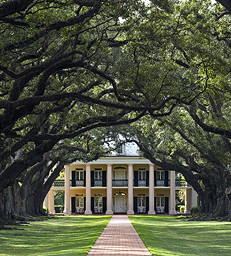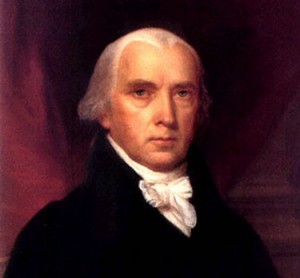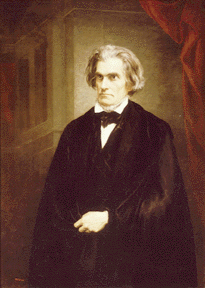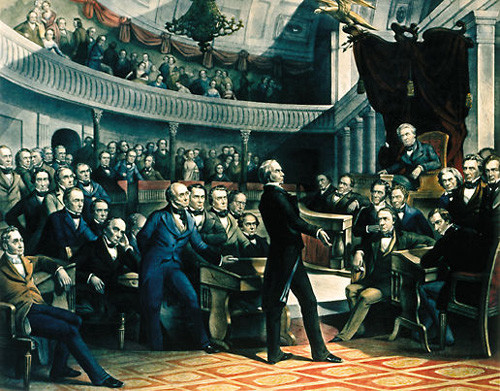The Southern Point, Part I: The Political Thought of John C. Calhoun
…the monster little heeding…
Pounces with his mouth of venom
At the head of Lemmikainen
But the hero quick recalling
Speaks the Master words of knowledge
Words that came from distant ages
Words his ancestors had taught himFrom the Kalevala, ancient Finnish epic
The great tragedy of American History is that the South had a point.
The essence of the point is that while every human being on the planet deserves compassion and consideration and we are all in some universal way, brothers and sisters derived of one eternal source, race counts. It’s pretty simple. What you are and who you come from affect the general direction of your economic, political, or social endeavors as well as proclivities towards certain types of behavior. And, of course, there are many factors contributing and detracting from the matrix of evolutionary success or failure – nature, nurture, luck, heredity, climate, trading routes, geographic terrain and even the zodiac, etc. ad infinitum. All of these considerations affect the area that one desires to live in, the way one is perceived by others, the unique advantage (or disadvantage) one gains from the forebears, the community one chooses to be a part of, and the company that one prefers to keep. It used to be that discussing race among a plethora of potential topics was well-received in decent company. “Of what blood are ye?” “Who are your people?” “What are they known for?” “Round here, we do things l’ak this (and it’s been l’ak that for as long as anyone can remember), but we’d love to trade points if you’ve got some good ones to share”…and so on. There was none of this hysterical sensitivity, an uneasy fear of giving or taking offense, and a thin-skinned obligatory reassurance that “we didn’t mean it like that” that we have all come to associate with modern parlance.
So, though I’ve framed it in a rather thorough manner, I will reiterate (because the subject tends to solicit such a knee-jerk meme from the deracinated modern regime): Race is not the only index of one’s personality or eternal value and the fundamental determinant of who one is in the larger scheme of things. God is no respecter of persons. But it is a factor that counts significantly in human affairs.
The White South, out of all the sections in the United States, very early on had to develop a variety of evolutionary group strategies to deal with the realities of interracial dynamics. Living together with massive numbers of Black people who had very alien traditions, forms, and mores (and who were 1–2 generations out of Africa) as well as fighting with Red men on the western frontier, was something they didn’t just hear about or read in a newspaper or in some romantic novella written by a woman who had never seen her subject. The situation was right before their eyes, day in day out. And they had to make do by organizing, fighting, and consciously maintaining a distinct position of authority. So, beyond accusations of White supremacy and class exploitation etc., did Southern Whites actually have any reason to act on their own behalf? Of course, they did. They themselves did not invent the institution of slavery or the considerable gulf between Third World and first world political forms. If we do not assume, by default (as the Northern press still likes to stress), that Southern society was totally motivated by hatred and a lust for controlling others unlike them, we can begin to perceive the White South’s actions over the course of American history rather as strategies for preserving the integrity and order of their communities against a maelstrom of potential chaotic developments (just take a look-see at inner city Atlanta, Montgomery, or DC and consider how prescient they were).
Southern Whites were forced to begin to consider their interests as being affected negatively by other competitive groups in a way that the Northeast never had to, until more recently. As a result, although they lost out on a number of key fronts as time went on, the White South did succeed in developing a sense of racial identity and consciousness that was based on a sincere grasp of the facts underlying their civilization (“though failing, hardly expiring”). And although every attempt is still made to denigrate the legacy of the South and the motivations of her people, the fact still remains that we, alone on the continent, consciously fought valiantly to defend our homes, families, and blood as a distinct and conscious derivative of Western civilization in the Western hemisphere. And thus, any contemporary movement in the United States that seeks to affirm some form of White racial consciousness or identity would do well to study the saga of Southern Whites.
Indeed, there is a vast multifaceted apologia that conveys a very different vision of the United States, in this direction. It is one in which racial considerations have an important place amongst many other factors that make up the diffuse panorama of a civilized society that derived its impetus from an older European legacy. And ironically, it is this submerged Southern version which is more authentically American (i.e. in line with the Founders’ hopes) than the prevailing forces that now hold the reins. So, we don’t need to have another Civil War. We just need to wake up the 200 million (or more???) American Gullivers and prod them into action by pointing them in the right direction.
The United States is like a huge bear with a fox on its back desperately trying to claw out its eyes. The fox may do a lot of damage, but chances are, if he doesn’t make it fast for the cave exit, in time, that bear will strike back with ruthless finality.
In 1867, two years after the end of the Civil War, Robert Lewis Dabney, chief of staff of Stonewall Jackson’s brigades and respected Presbyterian theologian, said the following in his Defence of Virginia:
After twenty-five years of discussion, we find that the staple of the logic of their writers is still the same set of miserable and shallow sophisms, which Southern divines and statesmen have threshed into dust, and driven away as the chaff before the whirlwind, so long ago, and so often, that any intelligent man among us is almost ashamed to allude to them as requiring an answer. When the polemic heat of this quarrel shall have passed away, and the dispassionate antiquary shall compare the literature of the two parties, he will be amazed to see that of the popular one so poor, beggarly, and false and that of the unpopular one so manly, philosophic, and powerful. …
Meantime, let the arrogant and successful wrongdoers flout our defence with Disdain. We will meet them with it again, when it will be heard, in the day of their calamity, in the pages of impartial history, and in the Day of Judgment. (pp. 14, 356)
And amazingly, now, after something like 170 years of discussion, the powers-that-be still haven’t gotten the point. We still see the farcical ramblings of “respectable” establishment historians like James McPherson and Eric Foner asserting the “positive liberty” arguments (clever masquerading terms for a Marxist redistribution of wealth and rights from Whites to Blacks and other Third-Worlders), tediously reminding us of the deluded fanatical promises of the corrupt Reconstruction regime, and embracing the modern subversion that our ancestors had buried when open debate was still allowed (without the fear of character assassination or job loss), so long ago: The Freedmen’s Bureau’s notorious exploitation of the Black vote immediately after the war and cruel foreclosure (not to mention the bold looting) on property owned by Southern Whites as an act of revenge is one of the saddest chapters in American history, not a carrot worth holding out to a salivating contemporary proletariat. And, of course, Lincoln himself confounds our latter day left-leaning Northern historians’ abstract air castle tower-of-cards construction with his well-documented (and somewhat embarrassing) affirmations of White supremacy. ‘All the King’s horses, and all the King’s men’… .
Postmodern students of American history would do well to reexamine the considerable work on the Reconstruction Period by the Dunning School (Columbia University) around the turn of the 20th century, chiefly that of Walter Lynwood Fleming. Here we get a truer picture of the utter destruction wreaked upon the post-bellum South by an arrogant and vengeful government that (despite its rabid animus) perhaps did not fully understand what it had unleashed.
The essence of the point back then (most sane people knew that race counted in some way, even a good many Yankees) was that, no matter what, the relationship between the sections and states in our republic was based on comity and compromise rather than force and conquest. If they couldn’t agree, well then, it was better for the upset parties to walk away.
Jefferson and Madison had authored the Kentucky and Virginia Resolutions at the turn of the 19th century to affirm state sovereignty when they began to realize the dangerous ways that the federal government could intrude with the passage of the Alien and Sedition Acts during the Adams administration. The Federal government simply could not lawfully prohibit the States from taking action in areas where they were not explicitly forbidden to go. This fundamental argument was based on the wording of the Tenth Amendment:
The powers not delegated to the United States by the Constitution, nor prohibited by it to the States, are reserved to the States, respectively, or to the people.
In other words, in the case of a tie, the residual energy of potential legal confusion fell in favor of the state bodies. Therefore, any federal action that interposed in the gray area between federal and state power was unconstitutional. Again, we have the authority of Thomas Jefferson and James Madison on this point. At the time of the Civil War, the South often asserted that the North was the true seat of the Rebellion. Indeed it was William Lloyd Garrison who had publicly burned a copy of the Constitution, as the leader of the Radical Abolition Party.
Eventually, as passions continue to recede from these issues, it will become evident that John C. Calhoun was the master American political genius of the 19th century, rather than Abraham Lincoln, the sad-eyed rail splitter of Illinois. If one were to pore through the 30 or so volumes of Calhoun’s papers, (magnificently preserved and edited by Clyde Wilson) it will also be apparent that he was supremely interested in discovering the best method for preserving the Union rather than destroying it. He was an American patriot of the highest order.
Calhoun had developed his political theories in a manner way beyond the acumen of his most of his contemporaries. Many of his peers complained that he delved into “metaphysical” areas that were not pertinent to contemporary issues and that he was just another one of those kooky right wingers who was better ignored, ridiculed, or destroyed. But to this day, Calhoun’s two treatises on American political theory tower above all subsequent treatments by future writers. And the fact is that he was in the pressure cooker of the racial turmoil that was beginning to rise to the surface. He was a far-seeing prophet who for good reason became known as the “cast-iron man.”
According to Calhoun, a constitutional republic depended principally upon the preservation of two key elements: “suffrage and proper organism combined.” This twofold core was then sustained upon the underlying principle of compromise between the original sovereign elements. Outside of the constituted authority, there was no internal coercive action. This was the way in which American “freedom” was originally understood. As a qualified citizen, one could speak one’s mind without fear of reprisal from the ruling authority.
The “proper organism” component is where most people trip up in their understanding. Basically, “proper organism” referred to the complex mechanism and process of distributing power across several, often conflicting fronts, and subsequently winnowing out dissent or encouraging assent by emphasizing “concurrence” as the only way to prevent the government from a variety of potentially nefarious actions. This methodology inspired principled statesmanship rather than the vicious power-mongering and the corruption of character that we see in the political arena today.
The end result of mixing suffrage with proper organism was, ideally, the “concurrent majority,” as opposed to the “numerical majority.” It was this tendency to devolve to the power of numbers in “pure democracies” that Calhoun and the Founders sought to avoid, perhaps stemming from their Aristotelian and Burkean legal heritage. Though glimpses of the concurrent majority have appeared previously, notably in Rome, Poland, Britain, and certain ancient German principalities, it was Calhoun who first developed it philosophically.
We see the operation of the concurrent majority in such Anglo legacies as the jury system, where all jurors must concur in order to move forward. The conservative principle of the jury’s action is the desire to reach a plateau of common agreement. If they don’t choose to act concurrently (i.e., their deliberations are belabored by selfish or narrow concerns), a human life potentially teeters in the balance. They are inspired to agree rather than to disagree. This dynamic is also present in our bicameral legislative structures. One house is based on numerical force and the other on the fact that the states themselves represent distinct organs of fundamental equality (i.e., each state, no matter the size, only gets two seats in the Senate).
The distinct organs of a body politic need to be recognized as distinct, interacting components of a functioning organism rather than as mere quantitative factors. For example, just because the brain directs cognitive functioning, we could hardly survive without a heart. Therefore, there is no possible computation in which the heart deserves to be affected negatively by the brain’s “appetite.” The underlying motive for the healthy operation of the various organs is a benign recognition of the necessity for the welfare of the whole system.
Not only did “proper organism” refer to the separation of power between three branches as written or implicit in the Constitution, it also took into consideration the diverse interests that might compose the body politic — i.e., the states, the sections, the manufacturers, the agrarians, the merchants, the press, racial loyalties, civic organizations, and so on. These were various “organs” in a civilization.
During Calhoun’s day, the states were the primary level of the formally recognized “proper organism.” However, these other secondary groupings involved powerful interests that brought considerable pressure to bear from different directions. Part of the thrill of the American experiment, involved the potentiality for the evolution of the organism, depending on what interests evolved into significant determining factors. Calhoun argued that the original founding generation perhaps would have done better to recognize the sections themselves also as primary organs that needed to be addressed by the Constitution. One of his suggestions included naming a president from each section as the nation filled out through westward expansion. These sectional presidents, then, acting together or nullifying each other, might succeed in further preventing the abuse of power. Unfortunately, this constitutional evolutionary process was perverted after the war into a teleological program that worked in favor of the victorious section’s ideology, destroying the states as the shield between the individual and the federal government in the name of equality and human rights.
This signaled the birth of the future Leviathan state that continues to be the bane of conservatives and a disaster for White advocates. It was accomplished by unilaterally castrating the White South in the name of freeing the slaves by forcing the Southern political organs to pass the 13th, 14th, and 15th Amendments with no say as to how these radical measures were going to be employed in their own communities. This is why in the 50s the Yellow Dogs harkened back to the documented unconstitutional process of passing these measures in an attempt to hamstring more federal incursions that had debilitating affects on white communities in the South.
With the election of Rutherford B. Hayes in 1876, however, a deal was struck (the Democrat Sam Tilden actually won the election due to the South’s renewed political vigor), and the Yankee soldiers were brought home. Washington realized that the South had a point. But the damage had already been done.
Ultimately, the Constitution represented an idea much more far-reaching than any single document. It was a nullification mechanism whereby the power of the government could be held in check. If properly inaugurated and maintained, it could theoretically perpetuate a union of high-minded citizens indefinitely. Calhoun’s concerns about the power of a majority can be seen in the following, from his A Disquisition on Government):
Question: To what avail could the strict construction of the minor party be against the liberal interpretation of the major, when the one would have all the powers of the government to carry its construction into effect — and the other be deprived of all means of enforcing its construction?
Answer: To no avail. The party in favor of the restrictions would be overpowered. The end of the contest would be the subversion of the constitution, either by the undermining process of construction — where its meaning would admit of possible doubt — or by substituting in practice what is called party usage, in place of its provisions — or, finally when no other contrivance would subserve the purpose, by openly and boldly setting them aside. By the one or the other, the restrictions would ultimately be annulled, and the government be converted into one of unlimited powers.
Part of the concern in freeing the slaves immediately involved maintaining delicate balances between the sections so that none could forever hold sway in the political arena. This is the real thinking behind the notorious 3/5s clause in the Constitution whereby black slaves counted as 3/5s of a person. It was a way to even up the power balance between North and South at a time when Northern populations were higher and more concentrated around urban areas whereas Southern agrarians were spread out more thinly across the land.
The radical destruction of the Institution, therefore, involved far-reaching consequences not apparent to the average layperson but easily recognizable by party bosses in the North who stood to capitalize through the destruction of an economic and political rival. Slavery probably would’ve died a natural death 1–2 generations later with the development of McCormick’s plow and other agricultural machines. The difference, of course, would have been that the Southerners themselves could’ve monitored any transition in such a way that would not have upset their entire way of life. They were, after all, civilized human beings, and it was their communities and the intimate domestic relationships therein that were at stake.
As we all know, politics is never humanitarian. It’s always concerned with the self-interests of the parties vying for control. Therefore, the real sense in which the South’s stand was morally superior to the North lay in its desire to go its own way; to live and let live. The North, on the contrary, desired to coerce the other section against its will, according to its own “enlightened” (‘naïve’ would possibly be a better term) theories. What made it even more insidious was that it was done under the auspices of a high-minded idealistic liberation of an oppressed people. Sound familiar?
Well, we all know what happened. War ended the debate and, although Calhoun’s logic was completely unanswered by Webster, Clay, and the entire subsequent generation, preserving the Union became the ultimate legal and moral principle, trumping sectional interests. Calhoun feared as much. His final words show his concern: “The South, the poor South, what will become of her?” This was ten years before the Civil War broke out.
And now the likes of McPherson and countless other hacks have the power of the Northern fist and the Jewish press behind them as they butcher away. Meanwhile, they are getting well paid for their patronage (and a few Pulitzers to boot) which will ensure that their energy will remain an annoying factor for some time to come.
It is not my intention to refight the Civil War. I just want to point out a certain depth and complexity to Southern political thought that rarely gets heard because accusations of “racism” usually silence all debate. If we can accept the Southern Point, though, and hold fast, then the horizons of our perceptions will be considerably widened.
The Southern Point is that race counts a legitimate consideration in the affairs of civilized human beings.
Sir Tristram is the pen name of a native Alabaman. His blog and artwork are posted at Electromagnetic Frontier.












Comments are closed.